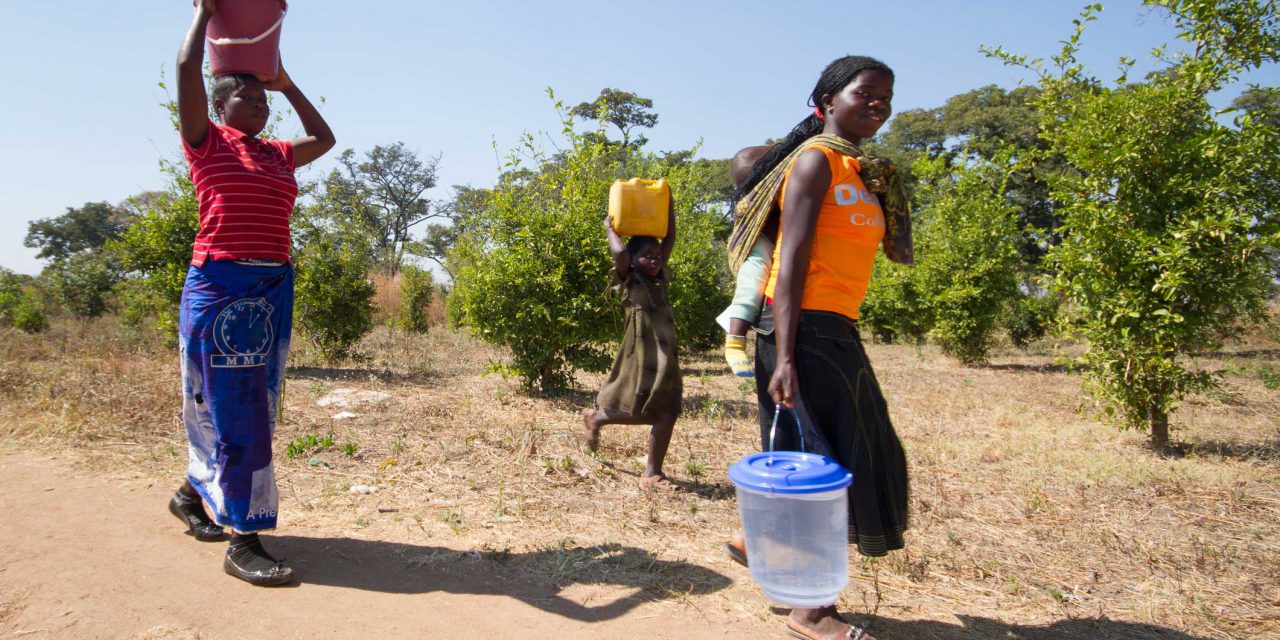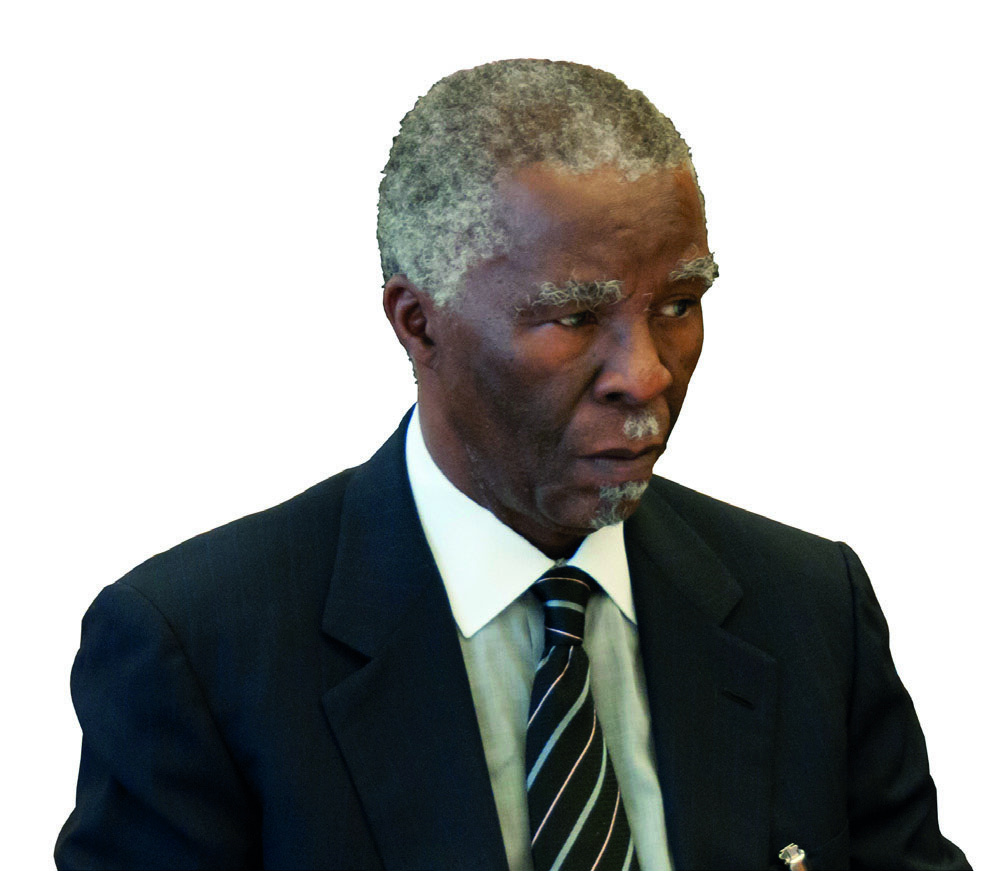SDG 6: clean water and sanitation
More than 900 million Africans lack water-flushed toilets, hand-washing facilities, clean drinking water and related services
By Marcel Gascón Barberá
Giving everyone access to clean water and sanitation might well be the least engaging of the Sustainable Development Goals (SDGS) set by the UN in 2015 to address a series of pressing global challenges. Though they are clearly important, complaints of a “lack of clean water and sanitation” rarely make it into the headlines. Moreover, unlike natural catastrophes, terrorist attacks or economic crashes, a lack of water and sanitation doesn’t occur at a specific point in time, nor is it often the result of a single act of negligence or inattention by a single actor. Rather, it is most often the result of persistent inaction on the part of governments, which is itself influenced by political, cultural and socio-economic realities within those societies. To all this we can add the influence of social taboos. People who have to deal with a lack of water and sanitation tend not to want to let others know that they have to defecate in the open, and that they lack facilities to wash afterwards. People are more likely to demand jobs, paved roads, health care and education than they are to protest about a lack of adequate sanitation infrastructure. The subject of water and sanitation is often marginal to the public conversation, which puts it conveniently at the bottom of most governments’ priority lists.
Yet the lack of clean water and sanitation is a major reason why life is harder in Africa than anywhere else. According to UN statistics, as much as 72% of Africa’s population did not have access to basic sanitation as of 2015. That means that more than 900 million Africans lack water-flushed toilets, hand washing facilities, clean drinking water and related services. Putting these numbers together within this broader context reveals the huge disparity between the magnitude of the problem and the amount of focused attention and action it receives. Things are particularly appalling in remote rural areas. The development of sanitation infrastructure requires complex and costly operations that only governments appear to be able to take on. “Sanitation or its converse, open defecation, is a negative externality,” wrote Shanta Devarajan, Senior Director for Development Economics at the World Bank, in a 2014 article (in economics, a negative externality is an activity that imposes a negative effect on an unrelated third party, according to a 2010 article by HR Varian). “People who defecate in the open not only harm their own children, but other people’s children,” according to Devarajan. “Their incentive to invest in sanitation is less than the costs.” He added that in rural India, the reduction in the incidence of diarrhoea from others’ adopting sanitation was about half of the effect of your own household’s adopting it.
But authorities often have neither the capability nor the political will to expand the state presence to outlying areas. Moreover, the lack of meaningful connection between governments and populations across the continent often makes it futile to lobby politicians to address these deficits. As Richard Jurgens and Luz Helena Hanauer wrote in Africa in Fact 49, for example, the continent’s leaders have successfully relied on the social fragmentation in their countries that is a result of the “diverse populations that were artificially yoked together by colonial projects” to render their constituencies powerless when it comes to demands for good governance and service delivery. To achieve this, and absolve themselves of any responsibility, the authors argue, many African rulers also resort to the “tactic” of blaming “imperial and colonialist” forces for their own shortcomings as lawmakers. The erosion of any accountability means that these shortcomings will be reflected, in particular, in politicians’ lack of incentives to provide sanitation infrastructure. The solution, experts are increasingly accepting, lies in realistic, creative actions that are clear about the limitations imposed by circumstance and which involve affected communities. Founded in 2010 by sanitation activist Kamal Kar, the community-led Total Sanitation Foundation has been one of the world’s leading advocates of this approach.
“Our vision is to unleash the hidden potential and capabilities of local communities to solve their own problems and take charge of their lives,” reads the NGO’s self-description. Basically, this means that communities are encouraged to stop relying on government intervention and to mobilise whatever resources they have to tackle the problem. It is only by doing so that they can start minimising the many negative health and wellbeing effects of not having adequate access to water and sanitation services, the NGO urges. Moreover, by taking the initiative themselves, the communities also push the authorities to pay attention and take action. “Often it has been seen that the ministers are foreigners in their own countries,” says Kar in an interview posted on his foundation’s website. “[The ministers] have no idea as to what is going on in their own country. They get totally surprised to hear the tremendous success of their local communities in achieving an ODF [open defecation free] status without any external help and support,” he adds. “We have noted that the moment you start triggering the institutional actors, the awareness and the sense of responsibility increases tremendously.” Born in Bangladesh and a specialist in livestock production, agriculture and natural resources, Kar pioneered the so-called “community-led total sanitation approach” (CLTS) approach in his country in 1999.
Its methodology “is based on a no-subsidy policy and rooted in a model of community empowerment and mobilisation” to end open defecation in underdeveloped communities. Since its successful execution in Bangladesh, the CLTS model has been adopted by the UN agencies for clean water and sanitation. Working with the UN, Kar has applied his approach “to more than 69 countries in Asia, Africa and Latin America”. One such project has been put into practice with successful results in Madagascar, a cash-strapped island with one of Africa’s lowest indexes when it comes to access to sanitation. Working on the ground with local NGOs, the UN’s Global Sanitation Fund has succeeded in eradicating open defecation in more than 16,000 villages. Having identified a community in need of proper sanitation, a group of doctors travels to the village and calls a meeting with the residents. A visitor takes the floor and asks for one of those present to draw a map of the village on the ground. When the map is completed, the residents are asked to use pieces of cardboard to indicate the locations of the village houses, wells and latrines. The next step is to count the number of latrines and compare this number to the number of people in the village. The conclusion is invariably that there are too few latrines for the number of people. At that point, the speaker interrogates the public about their defecation habits. This might be done in direct and even vulgar language. Repeated use of the word “shit”, for example, challenges participants to be open. The residents might start off regarding the meeting with shame or embarrassment, but the mood changes as the speaker in the centre continues to tease them about their lack of openness about an important issue.
The ashamed or disapproving expressions on the faces of participants soon turn to wry smiles. The initial discomfort dissolves in some laughter, and that opens the way to more honest discussion. The meeting then moves to one of the open defecation spots. There, the person leading the meeting touches a stick to some faeces, which he dips into a glass of water. Would anyone want to drink this water? The audience’s response is usually amused and bewildered: of course not. Further discussion follows, during which villagers are informed that contamination of this kind is a source of diarrhoea and other health threats. Following this, they are encouraged to work out the most basic solutions, which they often arrive at themselves: fly-proof latrines and artisanal hand-washing facilities. Villagers with natural leadership skills then commit to forming teams to build latrines, and work begins immediately. A hole is excavated in the ground and a brick outhouse with a wooden seat and a roof is constructed above it. Their promise to “stop eating shit” – as the visitors bluntly put it – becomes a matter of pride and self-esteem. When researchers return to evaluate progress, they usually find healthier, cleaner communities. Moreover, villagers are keen to spread the message to nearby villages. Weeks after the doctors’ visit, the results are evident in those communities that have honoured their commitments.
Faeces has disappeared from the margins of the village. The village surroundings don’t smell as bad as they did and residents are proud to show the functioning latrines they have built. Access to clean water and sanitation is more extended in Africa’s cities. However, urban areas face increasing demographic pressures. Massive migrations from rural areas are multiplying the number of informal settlements in virtually all African cities. These new, makeshift urban developments also often lack the most basic sanitation infrastructure, while their higher population density makes things worse than in the rural areas. Moreover, the transmission of associated diseases, typhoid, malaria, diarrhoea and cholera, which are among the leading causes of death on the continent, is faster in crowded environments. Nigeria, for example, has the largest population of any country in Africa, and that has doubled in size since the 1990s. Its population is nearing 200 million, and that is likely to double by 2050. More than 50% of Nigerians live in cities, while only 15% lived in urban environments in 1960, according to the UN’s Population Division. Lagos, the country’s largest city, now has an estimated population of more than 20 million people. A World Bank report shows that two out of three people in the city lived in slums in 2015. One of those slums is Makoko, a succession of shacks built on wooden stilts on the Lagos Lagoon. Once a quiet fisherman’s village known as the “Nigerian Venice”, Makoko has become the world’s biggest slum on water, where more than 150,000 people are exposed daily to a lack of clean water.
There are no sanitation facilities and the sewage ends up in the lagoon, below the slum’s houses. Residents live in a fetid atmosphere and often die of the diseases mentioned above. “For every one urban dweller reached with sanitation in Nigeria since 2000, two people were added to the number living without [it],” says a 2016 Water Aid report. According to the same NGO, some 67% of urban dwellers (or almost 60 million people) in Nigeria live “without improved sanitation”. Between 2000 and 2015, all global regions saw a drop in the number of people practising open defecation, except for Oceania and sub-Saharan Africa, according to a 2017 UN study. The major influencing factor? High population growth. Even with more than a decade before the target date of 2030, it is likely that high population growth alone will prevent sub-Saharan Africa from meeting its target of universal access to clean water and sanitation.
Marcel Gascón Barberá is a freelance journalist. He lives in Johannesburg and writes for several Spanish and international publications. He has previously worked as a correspondent for EFE Spanish News Agency in Romania, South Africa and Venezuela.













